Review copy kindly provided by Hachette Boardgames UK. Thoughts & opinions are my own.
Depending on where you come from and your generation, the word Gwent means one of two things. For some of you, it’s a county in Wales, and you’re wondering why I’m reviewing it. For the rest of the world, however, it’s a card game from the beloved Witcher series of games. Welsh people – sorry – maybe next time. For now, I’m taking a look at the physical version of a card game that comes from a video game, published by No Loading Games.
If you’ve come across Gwent before, you might be aware that there are effectively two different versions out there. The first time we had a chance to play Gwent was as a mini-game in The Witcher 3: Wild Hunt. People loved it so much that it spawned its own full digital release, handily also called Gwent. The version that got turned into this new physical game – Gwent: The Legendary Card Game – is the former, the version that was in The Witcher 3.
If you know the differences, you know what to expect. If you’ve no idea what I’m blathering about, don’t worry about it. This review is for you, Gwent newbie.
Just ten cards?
If you’ve never come across Gwent before, it’s a two-player (normally) duelling card game. You build a deck and play cards into a battlefield. Each card has a strength value, and when both players have passed, the two total strengths are compared, and the player with the higher number wins the round. Some of the cards you play can have some wacky effects. Cards might boost other cards in one of the three rows (melee, ranged, and siege), or hamper cards in a row. You might have a card which lets you place a card on the other person’s side of the battlefield, but with a benefit for you for doing it. Other cards let you tactfully retrieve cards from the table, or search your deck for named cards to place straight into battle.
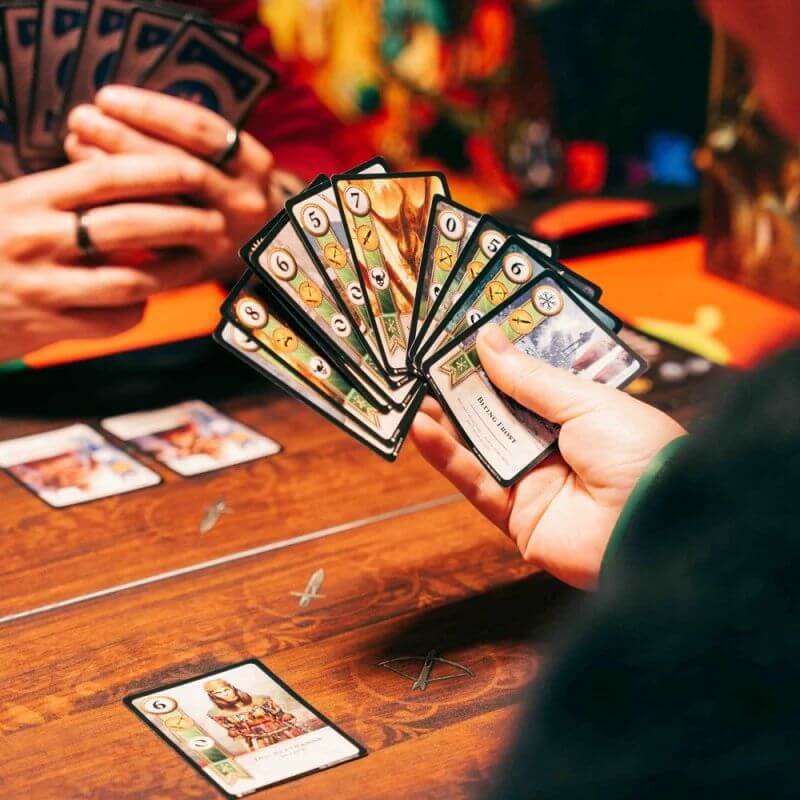
The effects that let you get more cards from your deck can be super important. You see, once you’ve built your deck from one of the five faction decks in the box, you shuffle it and draw ten cards into your hand. Those ten cards are the only cards you have for the whole game. A game of up to three rounds. Yikes, that’s not many cards, right?
The reason this very limited deck matters is that there isn’t a set number of cards played in each round. You can pass whenever you like. Play one card and pass if you like, saving the rest for the following two rounds. Once you pass, your total for the round is set in stone, which just leaves the other player to decide whether they want to keep adding cards to the battlefield until they beat your total. If you’re really confident, you can always just use five cards in each of the first two rounds, after all, it’s best of three. But what happens if the other player ends up winning one of those two instead of you?
If you’re new to Gwent, this restriction to such a small number of cards can feel really weird. Like, really? I only get ten cards? This game is terrible. It doesn’t take very long at all, though, to realise how to make each of the different factions’ decks sing. The Monster faction has cards which, when you play one, let you search your whole deck for cards with the same name, and put them straight onto the battlefield. Yeah, that ten-card limit doesn’t feel so bad then. The same goes for the Northern Realms and their Decoys, which let you pull the ol’ switcheroo and retrieve a card you’ve already played, putting it back into your hand. Each faction has its own way of making you feel less hamstrung than you thought you were.
Physical disconnect
It’s an odd thing when a video game takes the concept of a physical game and puts its own spin on it. Slay The Spire, for example, took the deck-building concept and did things which could only have been done digitally. So when Gwent landed on my table – a physical version of a video game, which mimicked a physical game – it made me wonder if there’d be anything a bit uncanny valley about it. Something which didn’t quite land the way I’d have expected.
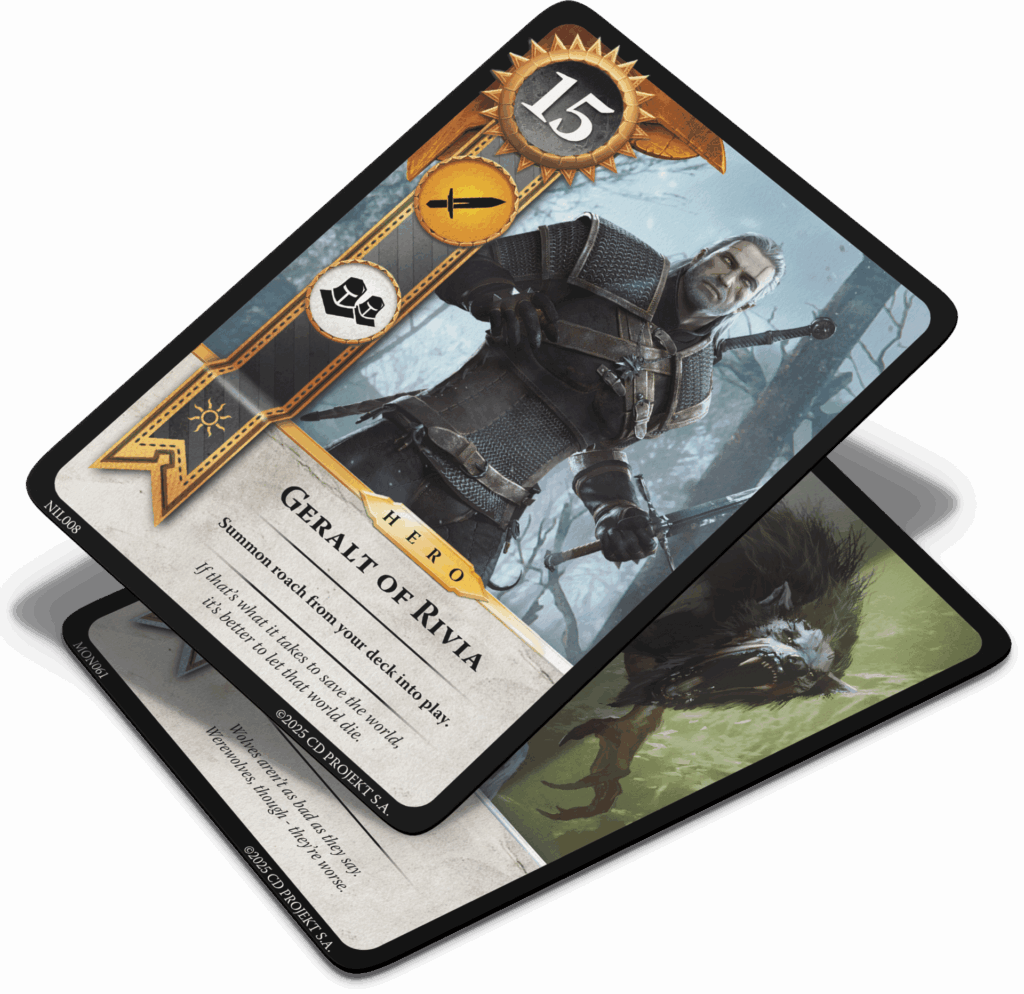
In all honesty, everything about the game itself works the way I’d hoped for and expected. Playing Gwent feels, for the most part, like playing Gwent. There are just two things which didn’t quite hit home for me. First is the playmat included in the box. It’s not a nicely rolled neoprene mat, instead, it’s a large, folded paper sheet, designed to look like the tabletop from the video game. This is a great idea, because if you don’t already know the game, everything has its own place. The problem comes from the creases. You cannot get the darn thing to lie flat on the table.
The strength tracking tokens and scoring gem tokens are made of cardboard. Small, light cardboard pieces sitting on a table-covering, creased paper sheet. If you nudge the sheet they have a tendency to move. It’s not the end of the world, it just means you might need to recalculate strength. It can also mean that your cards like to take a bit of a slide from time to time. Again, this isn’t the end of the world, but it’s annoying enough that after a play or two you’ll probably just leave it in the box and use the included separate scoreboard instead.
The biggest issue I found with the game was the rulebook. The layout isn’t great, it uses some confusing, changing terminology, and almost criminally doesn’t explain that there are pre-built decks for each faction until you get to the back of the book. A good friend of mine, Paul Grogan from Gaming Rules! has been tasked with re-writing the rulebook, so hopefully future editions will be more newbie-friendly. It’s just something to bear in mind while you’re trying to learn the game. I highly recommend checking out Paul’s tutorial and playthrough video.
Final thoughts
Let’s get the easy bit out of the way. If you’ve played Gwent before, and if you liked Gwent, you will like Gwent: The Legendary Card Game. Sounds stupid, but that’s probably what you wanted to know. For the rest of you, though, is Gwent the game for you? The easy way to answer is to ask if you like duelling card games. If you do, Gwent will make you very happy. It’s quick, it’s easy to learn, and there’s a surprising amount of depth and variability in the box.
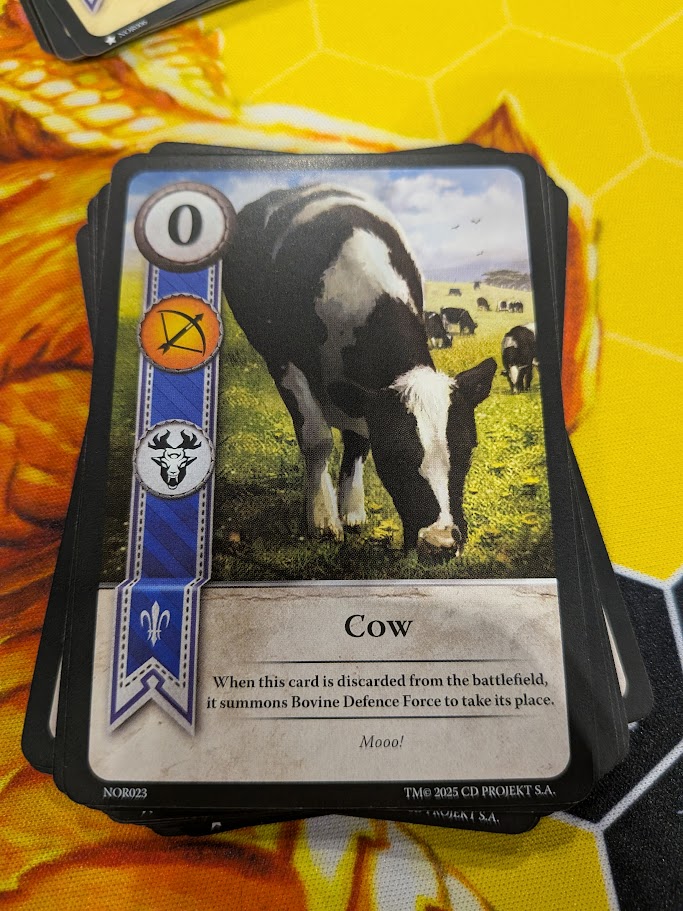
There are five different factions in the box, and a whole host of ways to play. The pre-built decks are the perfect way to get the hang of things, but once you’re au fait with things, the deck-construction rules are really loose. The total strength of your deck doesn’t matter, as long as the number of different types of cards (heroes, units, etc) is within the limits. There are extra rules for tournament play that restrict the total strength, and modes which let you play with more than two players, too.
If you don’t like duelling games, there’s nothing in here that’ll change your mind. Its one saving grace for you is that games don’t last long at all. Fifteen minutes and you’re done. If games like this are your thing, however, Gwent is great. The flexibility, the clever cardplay, and the way each faction really feels different to play. It’s a really nice package for just shy of £40, and well worth investing in.
Note: If you’ve played the physical versions of Gwent that came with the special versions of the Witcher 3 video game, this is effectively the same game, just with the addition of one extra faction.
Enjoyed this review? Consider tossing a coin to your Witcher.
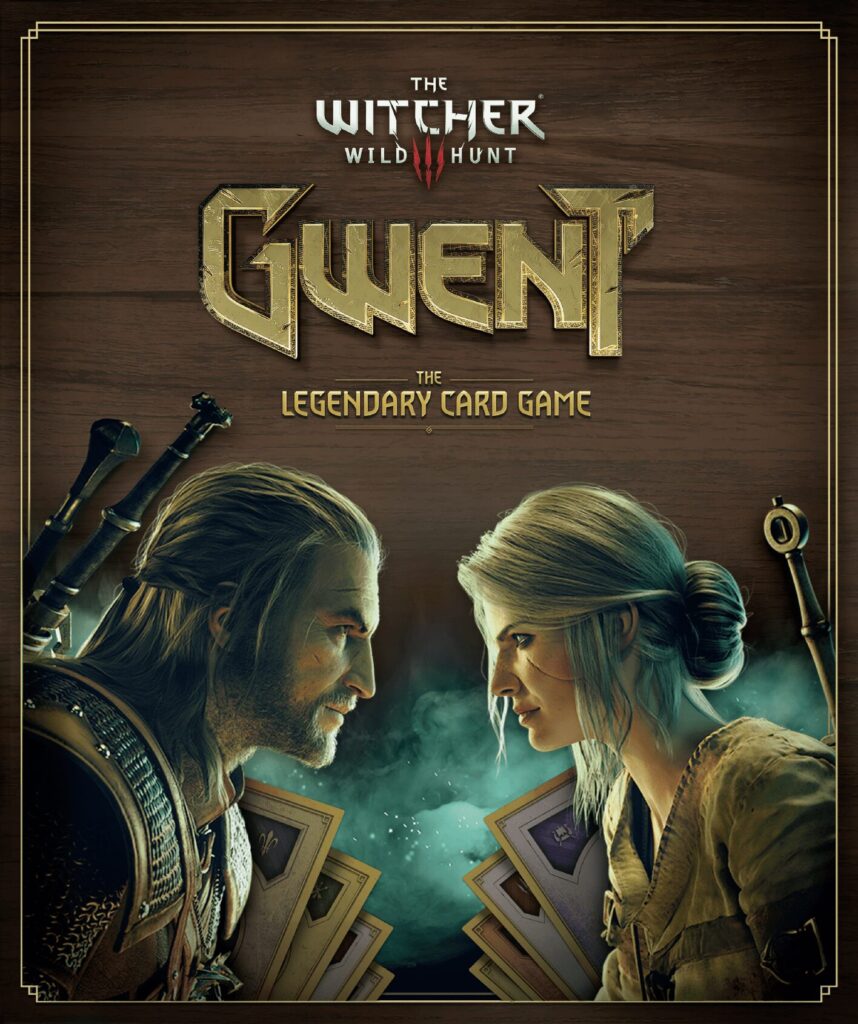
Gwent: The Legendary Card Game (2025)
Design: CD Projekt
Publisher: No Loading Games
Art: CD Projekt
Players: 1-5
Playing time: 15-20 mins
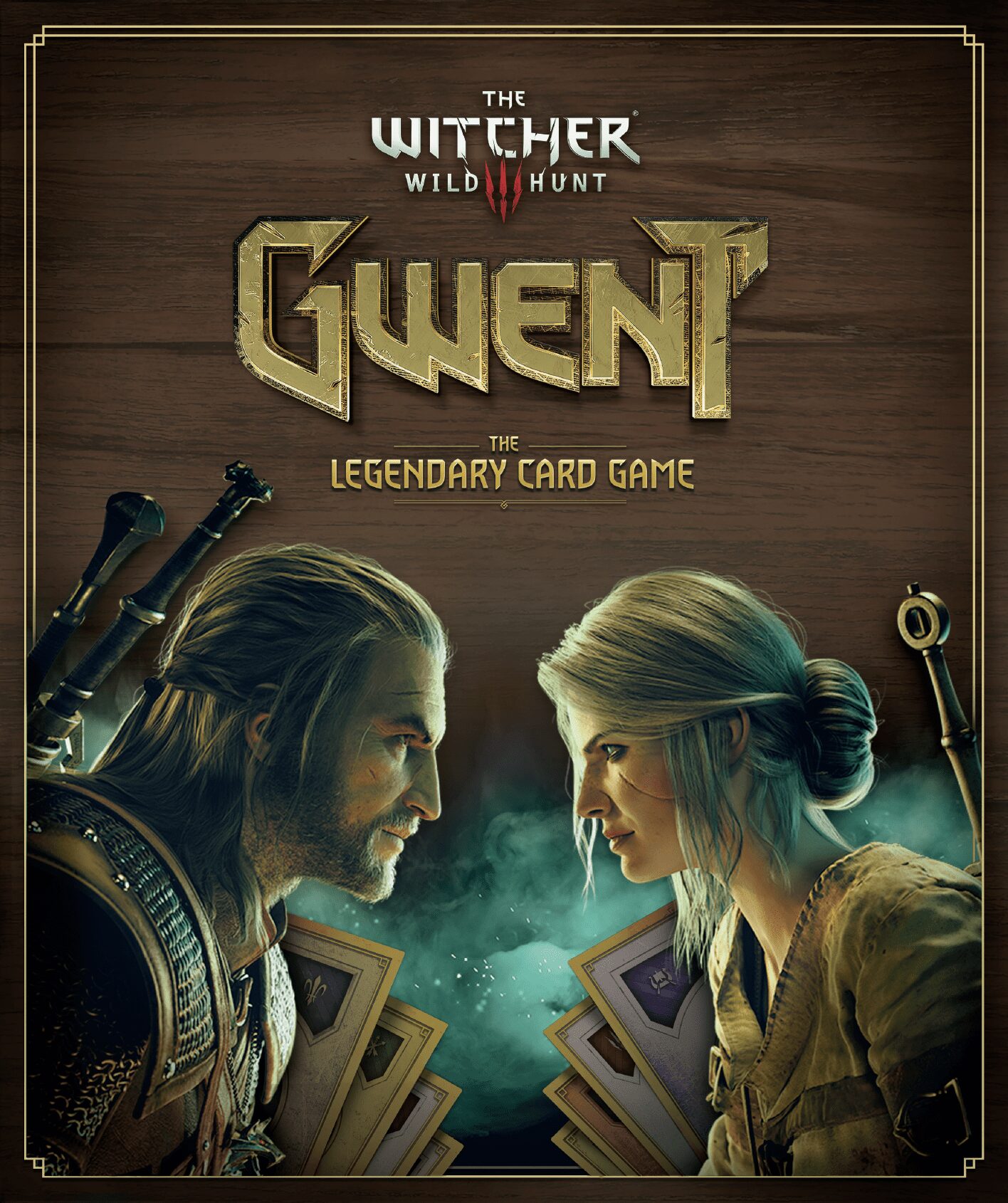


Played this for the first time last night, and loved it! Have never played the Witcher, so knew nothing about this before, but am already looking forward to my next play, and to digging in to the deck building aspect of it.
Yeah it’s a bit of a rabbit hole for sure, luckily there’s a lot of good advice out there if you google for help with different factions 🙂